Custom Modifications of Shipping Containers
Secure Space Manufacturing, LLC -- 'We are the Roughnecks'
Containers are constructed of corrugated steel designed and built to transport secure dry cargo through every kind of inclement weather across every ocean in the world. Just think for a minute, in ports and depots and on huge ships they are stacked 7 high with nearly 70,000 lbs. in each one!! That means the one on the bottom of each stack is holding 420,000 lbs. that’s 210 tons! When I say they are incredibly strong and versatile that is truly an understatement.
Except for the 53ft units they have a rugged sub-frame 6 inches deep that allows for steel joists under a very tough and expensive 18 ply plywood floor. In that sub-frame, there is room for plumbing, wiring, insulation etc… One of our Buyers designed a secret steel floor safe that we welded in under a hinged wood floorboard that he covered with a common carpet. He kept cash, guns and ammo etc. etc. “out of sight out of mind. When completed you’d never know it was there. I share that as only one small example of some of the creative things people have come up with. Numerous factors can have a significant impact on how the unit will fit the buyer needs and goals.
What modifications are available, affordable, and effective for the buyer’s intended use? I’m an old school kind of guy that was never taught I can’t do something, so please accept that I am very sincere when I ask, what can we do for you? At SECURE SPACE SOLUTIONS we like a creative challenge even if it takes us past our comfort zone. I am truly proud of our shop team that always gets the job done. Bring us a new challenge and expect results.
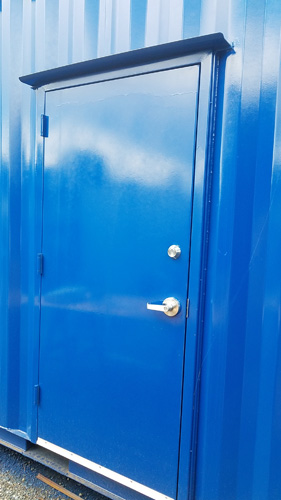
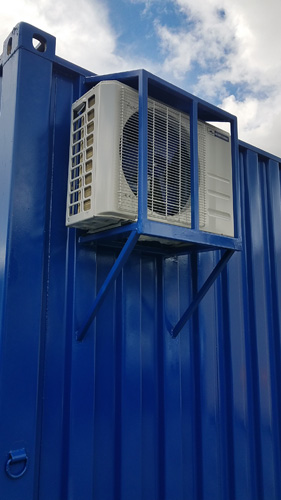

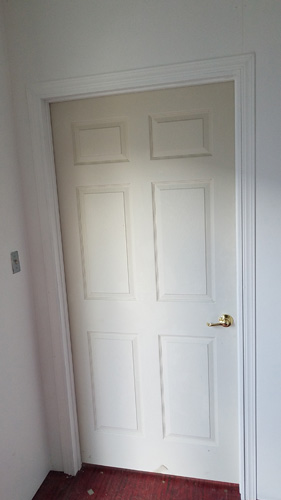
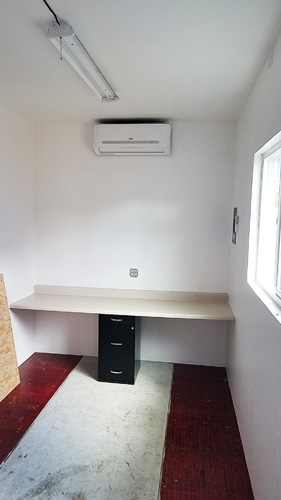

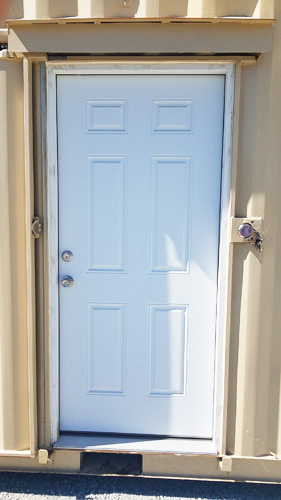
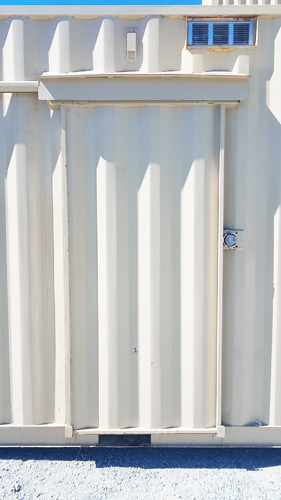
Containers We Have Customized
- Cargo Containers are incredibly versatile!
- At Secure Space Solutions, we like a creative challenge.
- The possibilities for domestic use seem endless.
- We build every project to be far stronger & more secure than the average home or business.
- We do the rough-in (‘roughneck’) work, you finish the project your way!
- Steel studs & closed cell spray foam insulation can be installed.
The possibilities for domestic use seem endless. However, if you’re going to build a dwelling, shop cabin, etc. you will soon learn that cargo containers are a little different compared to conventional construction. Most buyers purchase containers from us, and we do the rough-in work and they finish the project their way. I define “rough-in or roughneck work” as we weld in door and window frames. vents, air conditioning brackets, partitions, etc. etc. Buyers need to keep in mind the thin corrugated steel walls and how to attach and-or apply conventional building materials to them.
For example, we weld in a steel door jamb to fit a pre-hung wood door jamb. Also weld in a steel window jamb to fit a vinyl window. I’ve seen some good work people have done themselves like installing wood pre-hung doors to the steel wall with metal screws and lots of calking. I don’t fault them and often complement them but keep in mind our name “SECURE SPACE.” We build every project to be far stronger and more secure than the average home or business. We often install steel studs and closed cell spray foam insulation so buyers can sheet rock or panel the inside to suit themselves.
INSULATION
***A Very Important Issue For Sure***
Did I mention insulation? I sure did….!
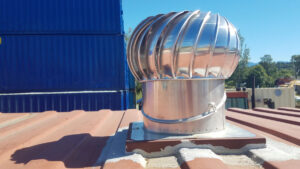
Container insulation is a very important topic. Containers are a steel box and in the hot sun that can be compared to an oven and in extreme cold a refrigerator. I am aware of certain events where a container set directly in the hot sun and the inside temperature reached 140°. Also, I have firsthand knowledge of inside container temperatures only 2° higher than the actual outside temperature below 0° in winter. Even more important than temperatures are the fact that closed cell spray foam insulation and ventilation is the most economical way to control the moisture issue related to container use. You might say, Wow how did the insulation issue explode so quick? The term insulation now is tied to ventilation, temperature, and moisture control….!
Here on the West Coast we have a strong complement of worthy container suppliers that will share their knowledge so the unit you select will be right for you. Beware of those who “FLIP” boxes AS-IS for a quick buck. In the following paragraphs I will share some very important info with you to keep in mind if you use Conex boxes.
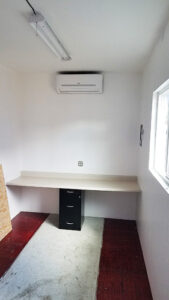
Now back to facts, **insulation now is tied to ventilation, temperature, and moisture control..!** My intended goal here is to impress upon you the importance of this topic even to the extent of a possible serious health risk! before I cause any more alarm, if you are buying or renting a container to Secure/Store almost anything for a short time you need not concern yourself with the moisture issue and the temperature issue is most often covered by common sense. If your unit has no insulation and the item you want to store is sensitive to temperature extremes don’t put it in there..! Simple as that!
The following is just one unfortunate example I share with our clients. An Oregon County Sheriff purchased a custom 40ft container from a Portland supplier for an emergency command center. The supplier installed wood studs and fiberglass insulation then fully sheet rocked the unit. The supplier installed windows, doors and a full-length table to support numerous computers, radios, broad band emergency communication equipment etc. etc. All seemed to be going well until black mold began to creep up all around the base of the sheet rock. I was called to provide a solution to the problem. We broke away some sheet rock at floor level to find the fiberglass insulation was saturated with moisture and black mold. The supplier didn’t dry the walls completely prior to installing the fiberglass and sheet rock thus incapsulating the moisture and sealing it inside the walls. As I mentioned above, Shipping containers have strong tendency to sweat and that exacerbated the problem. Clearly the issue was Improper preparation and installation creating a serious health risk that rendered the unit unusable for their intended purpose. The Sheriff tore out all the improvements and is using the unit for non-sensitive equipment storage.
All in all, a very expensive lesson that should have been avoided.
THE DOs...
The very first thing on the DOs list is an absolute. “Moisture and temperature control are regulated by insulation and ventilation. With that said the next most important thing on the DOs list is “manage the temperature and control moisture” in the unit you are using. Let’s say your unit has no insulation and no custom vents installed. You can promote ventilation simply by opening the big double doors for a few hours, at least every few days, to vent the unit. Should you find condensation on the walls you may need to vent it more often and or install a fan to circulate air. Ventilation management is needed year around even on rainy winter days. If you have a vented/insulated SECURE SPACE unit your DO list may also suggest you close or open the vents to produce a desired result. On your DO list you may want to note to check for pinhole leaks every few months especially in wet season. A pinhole leak is most often fixed in a few minutes with a putty knife and tar or a dab of paint often will last for years.
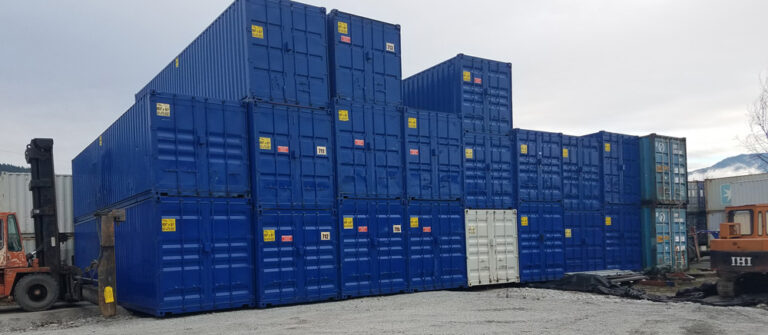
On your DO list, we advise people, DO clean the roof before rains come each fall. Also DO give the roof a fresh coat of aluminum fiber seal every few years. This reflects the Sun to keep it cool inside and prolongs your roof. Cool Seal is what we use most often, and we buy it a Sherman Williams Paint store. Low’s and Home Depot have brands like Snow Coat etc. Silver Seal used to be a great product for the price but they “improved it.” Need I say more?!
& DON’Ts...
The very first thing on the DON’Ts list is, “Don’t ever fill a (as-is) container with household (or sensitive items) and lock it up for a long time” Notice I used the term “as-is” in the sentence above meaning the unit is just the way they come with no vents, insulation etc. Etc. If the unit is properly vented and insulated you should be able to store just about anything any time. Another serious “DON’T” is don’t accept delivery without inspecting the unit. Common sales lingo is this unit is “Wind and Watertight” abbreviated as WWT. That is an issue that we at SECURE SPACE have enjoyed a lot of compliments on. I can’t begin to estimate the number of units that we purchased as WWT and when we put them through our shop, we found numerous leaks in the roof and sides.
Another important DON’T is, don’t allow leaves to pile up the roof for an extended length of time. One of our buyers placed his unit under a large maple tree for shade and let leaves pile up on the roof several inches thick. He claimed the leaves created an effective insulation keeping his unit cool inside. I must agree that is true however the unit was developing numerous leaks as time went on. Most people don’t know that tree leaves, especially maple, contain strong acid that is released when they get wet. A strong acid used for Gun Bluing was extracted from boiling maple leaves and bark. That same acid caused considerable damage to the roof of his container.
